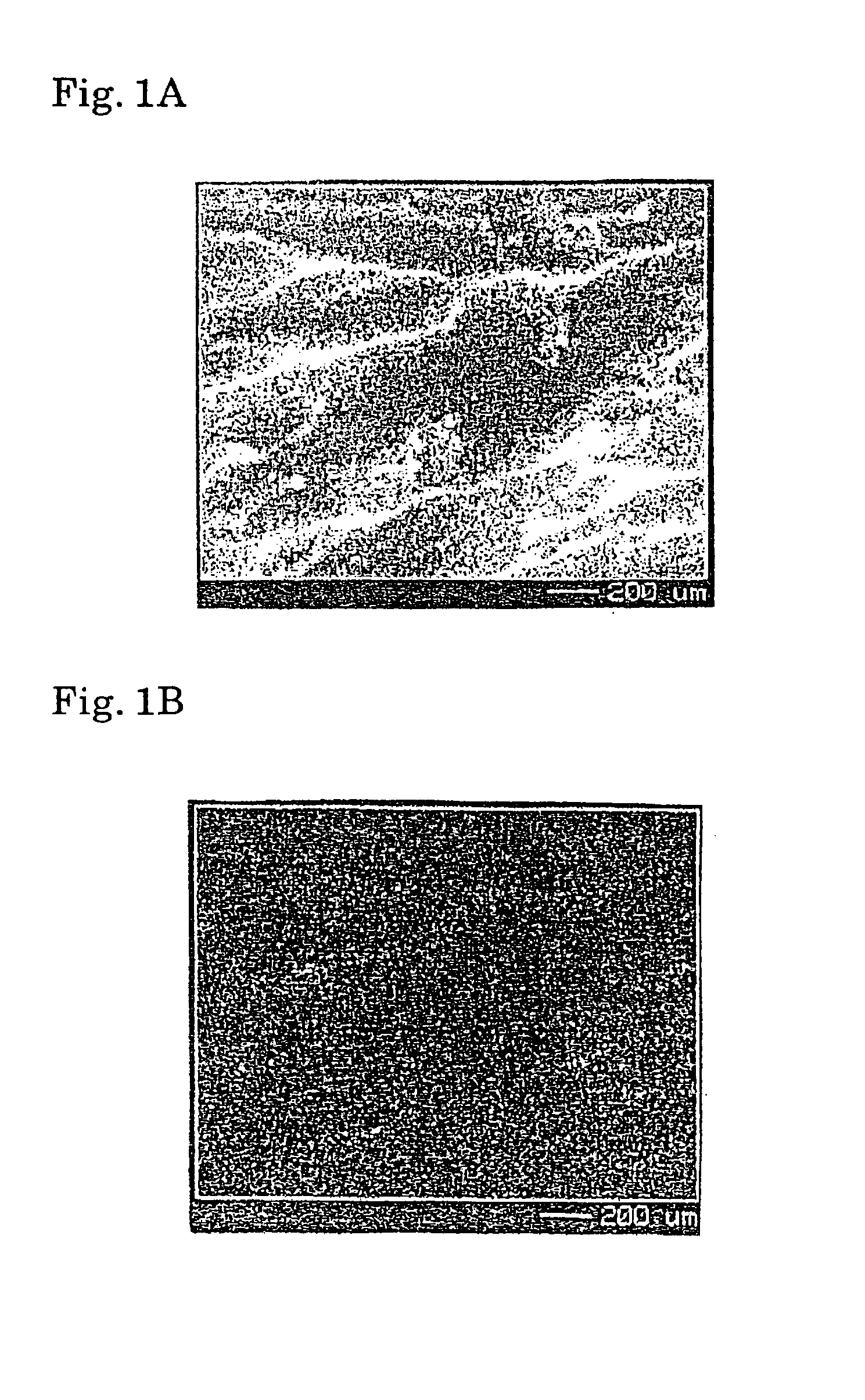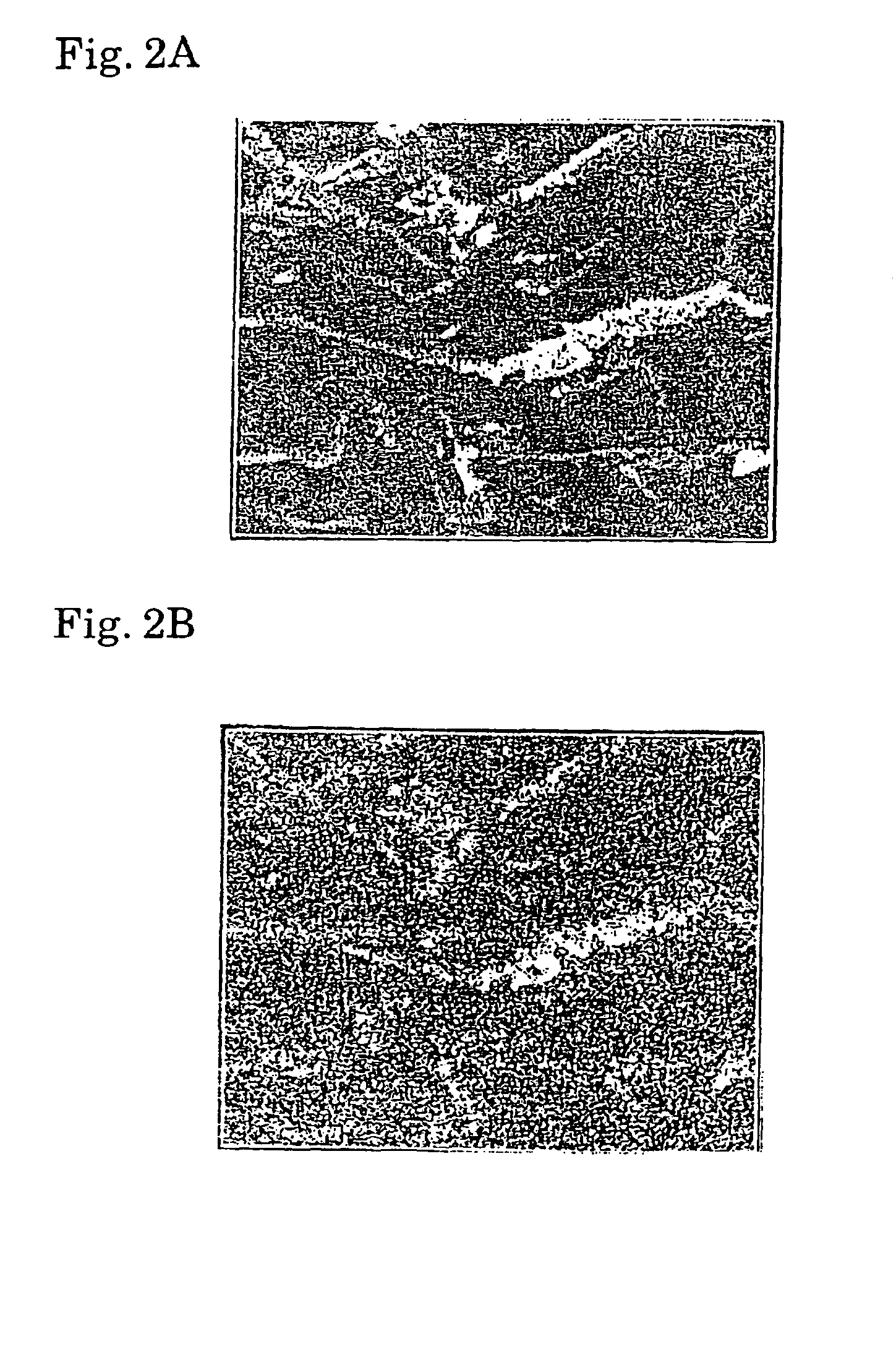Thermoelectric conversion material and method of producing the same
a technology of thermoelectric conversion material and thermoelectric conversion method, which is applied in the direction of thermoelectric device junction material, thermoelectric device manufacture/treatment, electrical apparatus, etc., can solve the problems of high seebeck coefficient, difficult to produce a uniform composition with melting or zl, and low thermal conductivity, and achieve the effect of reducing thermal conductivity
- Summary
- Abstract
- Description
- Claims
- Application Information
AI Technical Summary
Benefits of technology
Problems solved by technology
Method used
Image
Examples
example 1
[0098]High-purity silicon (10N) and a added element (dopants that generate carriers are labeled Ap and An, while added elements that do not generate carriers are labeled Bnc; the same applies to all the added elements in the following examples) were compounded as shown in Table 1 and then arc-melted in an argon gas atmosphere to produce p- and n-type silicon thermoelectric conversion semiconductors. The temperature in the arc melting was approximately 1900K, and the molten material was cooled at a rate of 50 to 100 K / sec by a water-cooled copper base. The average crystal grain size of the obtained material was approximately 50 to 100 μm.
[0099]The button-shaped ingots thus obtained were cut to sizes of 5×5×15 mm, 10×10×2 mm, and 10 (outside diameter)×2 mm, and the Seebeck coefficient, Hall coefficient (including carrier concentration and electrical conductivity), and thermal conductivity were measured for each. The measurement values at 1100K and the Figure of merit (ZT=S2T / ρκ) are s...
example 2
[0101]In order to produce p- and n-type silicon thermoelectric semiconductors, high-purity silicon (10N) and added elements were compounded as shown in Table 3, after which this product was put in a graphite crucible and melted in a high-frequency melting furnace in a vacuum (10−4 Torr). The melting temperature was approximately 1900K, the casting temperature was approximately 1800K, and the melt was cast into a mold with a thickness of 10 mm. The cooling rate of the molten material was 10 to 50 K / sec, and the average crystal grain size of the material was approximately 100 to 500 μm.
[0102]The ingots thus obtained were cut to sizes of 5×5×15 mm, 10×10×2 mm, and 10 (outside diameter)×2 mm, and the Seebeck coefficient, Hall coefficient (including carrier concentration and electrical conductivity), and thermal conductivity of each were measured by the same methods as in Example 1. Table 4 shows the measured values at 1100K and the Figure of merit (ZT=S2T / ρκ).
example 3
[0103]In order to produce p- and n-type silicon thermoelectric semiconductors, high-purity silicon (10N) and added elements were compounded as shown in Table 5, after which this product was put in a graphite crucible and melted in a high-frequency melting furnace in a vacuum (10−4 Torr), and it was confirmed that the components melted uniformly at approximately 1800K.
[0104]After this, the upper part of the above-mentioned graphite crucible was lowered to 1700K, silicon seed crystals were brought into contact with the top of the melt, and the melt was slowly pulled up. The inside diameter of the crucible was 100 mm, the pulling rate was 0.3 to 1 mm / sec, and the pulled crystals were vibrated once every five seconds in order to render them polycrystalline. The average crystal grain size of the obtained material was approximately 1 to 10 μm.
[0105]The ingots thus obtained were cut to sizes of 5×5×15 mm, 10×10×2 mm, and 10 (outside diameter)×2 mm, and the Seebeck coefficient, Hall coeffic...
PUM
 Login to View More
Login to View More Abstract
Description
Claims
Application Information
 Login to View More
Login to View More - R&D
- Intellectual Property
- Life Sciences
- Materials
- Tech Scout
- Unparalleled Data Quality
- Higher Quality Content
- 60% Fewer Hallucinations
Browse by: Latest US Patents, China's latest patents, Technical Efficacy Thesaurus, Application Domain, Technology Topic, Popular Technical Reports.
© 2025 PatSnap. All rights reserved.Legal|Privacy policy|Modern Slavery Act Transparency Statement|Sitemap|About US| Contact US: help@patsnap.com



